By Vince Hawkins
By the winter of 1776, the struggle for American independence had reached its lowest point. In June of that year General George Washington’s Continental Army had stood at nearly 20,000 strong. Although untried and poorly trained—if at all—the army had been full of fight and was eager to engage the British in the cause of American liberty. Now, six months later, the remnants of that army lay huddled along the banks of the Delaware River in Pennsylvania. Starving, freezing, their clothing in tatters and many without shoes, these few hardy souls, now numbering only some 4,000 effectives, still clung to their faith in their commander and waited to see what would happen next.
That same June the British army in America, under the command of Maj. Gen. William Howe, had been massively reinforced by some 24,000 men, the largest invasion force ever assembled by Great Britain. On August 27, General Howe launched his campaign against the American rebels with an attack on Long Island. He drove American forces out of New York City, across the state, and through New Jersey, stopping only when winter began to set in. Despite valiant resistance, the American army suffered defeat after defeat and was continuously forced to withdraw in the face of overwhelming pressure. With each re- versal Washington’s numbers dwindled from battle losses and with each month they shrank still further owing to expiring enlistments.
General Howe and his brother, Admiral Richard Lord Howe, not only commanded the land and naval forces in the Colonies, but were also appointed by Parliament as peace commissioners in an effort to try and resolve the American problem by other than military means. Having driven the American army out of New Jersey, it appeared that the end of American resistance to the Crown was in sight. On November 30 the Howe brothers issued a proclamation promising a pardon to any Americans who declared their allegiance to the king within 60 days. Hundreds of New Jersey and Pennsylvania citizens abandoned the seemingly lost cause of American independence and swarmed to the British camps, eager to take advantage of what appeared to be their last chance to save their lives and property. Loyalist sentiment abounded throughout New Jersey, greatly hampering Washington’s efforts to draw on the militia to support his army and acquire intelligence on enemy activities.
To further exacerbate matters, on December 12 the Continental Congress, fearing that the British might advance on Philadelphia, adjourned to Baltimore, leaving Washington with almost dictatorial “power to order and direct all things relative to the department, and the operations of war.” The following day Maj. Gen. Charles Lee, the army’s second-in-command and considered by many to be the finest soldier in American service, was captured by the British. Lee commanded a large portion of the Continental Army, some 5,500 men, and this command, which now fell to Brig. Gen. John Sullivan, found itself isolated in New Jersey with the dubious task of trying to reach Washington’s main army on the Pennsylvania bank of the Delaware. On December 14, with the enemy at bay and seemingly defenseless across the Delaware, General Howe called an end to active operations and ordered his army into winter quarters, thereby giving Washington’s harried army a brief respite.
His situation desperate, Washington knew something had to be done or America’s fight for independence would be finished. He needed to strike at the enemy somehow to show that the struggle was not over. He needed a victory to restore hope to the country and renew faith in his men that their cause was not lost. On December 20, Washington’s little army was reinforced by the arrival of General Sullivan and some 2,000 men—the remnants of Lee’s army—along with 500 men under Maj. Gen. Horatio Gates from the northern command and some 1,000 Philadelphia militia under Colonel John Cadwallader. Although most of these men were ill, hungry and poorly clothed their arrival raised Washington’s strength to around 6,000 men. By the end of the year, however, the enlistments of most of these men would expire, reducing his force to a mere shadow of an army.
Washington was resolved to strike now, while he could. But where and when? One of the major problems facing Washington was lack of intelligence on the enemy’s plans. Of equal, if not greater, concern was his fear that the enemy would learn through the use of Tory sympathizers and spies of the size and condition of his army or his intention to attack. Although Washington had ordered all the boats along a 70-mile stretch of the Delaware seized and brought to the Pennsylvania side, with winter hard upon him the river would soon freeze over. When this happened, his last defense would be nullified and the enemy would be able to swarm across and destroy his army.
Accordingly, on December 14, Washington sent a circular to his general officers indicating the great need for intelligence on the enemy’s plans and activities. In it he stated, “Let me entreat you to Cast about to find some Person who can be engaged to cross the River as a spy, that we may, if possible, obtain some knowledge of the Enemy’s Situation, movements, and intention; particular enquiry to be made by the person sent if any preparations are making to cross the River; whether any Boats are Building, and where; whether any are coming across Land from Brunswick; whether any great collection of Horses are made, and for what purpose &c. Expence must not be spared in procuring such Intelligence, and will readily be paid by me. We are in a Neighborhood of very disaffected People, equal care therefore should be taken that one of these Persons do not undertake the business in order to betray us.”
In an effort to preclude the enemy gathering any intelligence about his force and designs, on December 20 Washington ordered his scouts to be on the lookout for the notorious John Honeyman, a “Tory farmer and suspected spy, who is known to be in the service of the enemy.” If found, Washington specifically ordered that Honeyman was to be taken alive. Two days later a pair of Continental cavalry scouts spied a man carrying a bullwhip and cattle rope about three miles from Trenton on the River Road. They gave pursuit and when the man slipped on the snow and ice they overtook him. It was Honeyman. Using his own rope to tie his hands the scouts ferried him across the Delaware and delivered him to Washington’s headquarters. The general ordered everyone out of the room so he could interrogate the spy personally, but left instructions that if Honeyman attempted to escape the guards should shoot him. After about a half an hour Washington instructed the guards to put Honeyman in a log-house prison and keep him well guarded, as he was to stand trial for treason the following morning. Late in the night a fire broke out in camp and the prison guards were momentarily called away to help quell the blaze. When they returned they found the door to the prison open and Honeyman gone.
Although parties were sent to search for him, Honeyman made good his escape. Crossing the Delaware, he worked his way back to Trenton where he asked to be taken to the Hessian commander, Colonel Johann Rall. As Honeyman was known to the Hessians, having been the cattle herder and butcher for the garrison, he was taken directly to Rall. Upon questioning, Honeyman described his capture and close escape, relaying in detail the pitiful condition of the American army. After having convinced Rall that the Americans were in no state to make an attack, Honeyman was allowed to leave Trenton and subsequently made his way to Brunswick.
On December 24, Washington called a council of war and laid out his plan for an attack against the Hessians at Trenton. His plan was replete with specific details of the garrison’s overall strength, location of their guard posts, position of their artillery park, and the weaknesses in their defense. Colonel Rall, believing the Americans to be poor soldiers and no threat to his well-trained troops, had disobeyed direct orders and had not built any redoubts or defensive positions around the village. This error left Trenton entirely open to assault and gave Washington the opportunity he so desperately needed. Further, Washington was aware that the Hessians were preparing a large celebration for Christmas evening and that their reveries would continue well into the early morning. His plans made, Washington gave the password for the operation—“Victory or Death.”
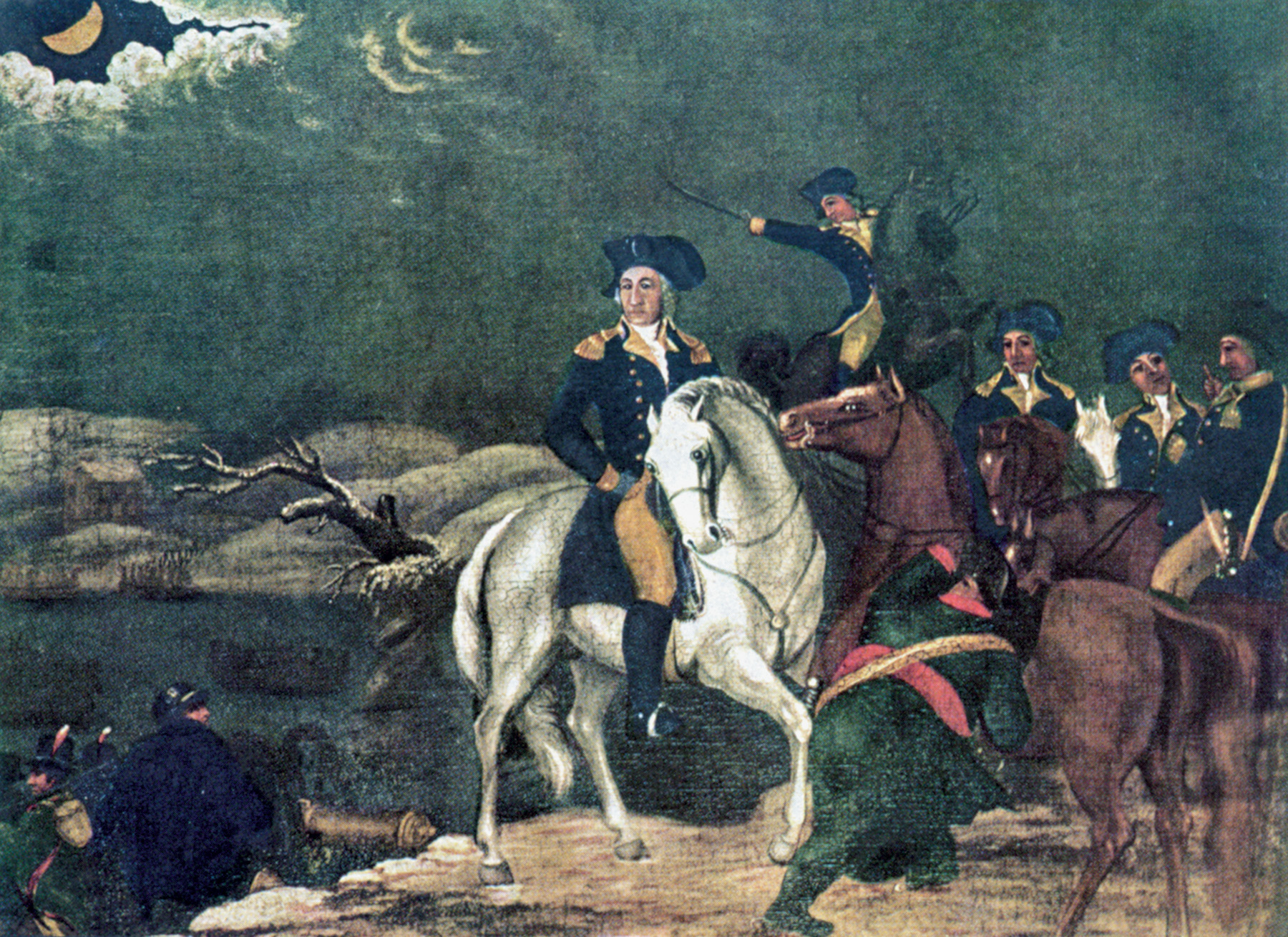
On the evening of December 25, Washington and a force of some 2,400 men crossed the Delaware in boats and early the next morning marched on Trenton. His plan called for an attack across three points on the river, but Washington’s contingent was the only one that actually made it across and engaged the enemy. Taken by surprise and not fully recovered from their celebrations of the previous night, the Hessians still tried to offer resistance to the American attack. But wherever they attempted to rally, they found themselves confronted by Americans on several sides. When Colonel Rall fell mortally wounded, Hessian resistance virtually collapsed. In roughly two hours most of the Hessian garrison was killed, wounded or captured. Of the 1,200 men under Rall’s command, 106 were killed or wounded, 918 made prisoners, and the rest escaped. Washington’s army had also taken six brass three-pounder cannon and 1,000 arms, plus drums, flags, and several wagons of military stores and food. American losses were four men wounded.
Washington had his victory and a substantial one at that. An entire enemy force had been destroyed and vital supplies taken with hardly any loss. Washington, however, did not stop and rest on his recent laurels, for within eight days he struck the enemy again at Princeton, severely mauling a British brigade stationed there. In what has become known as the “ten crucial days,” Washington and his army won two significant victories, restored the morale of both his army and the American people, and rejuvenated the cause of American independence. Of equal importance was the fact that several European courts now began to sit up and take notice of America’s struggle for liberty and particularly the resolution and tactical brilliance of her military commander.
But what of the Tory spy, John Honeyman? After leaving Trenton he made his way to his home and family in Griggstown, NJ, where he secretly hid for a few days before quietly leaving for Brunswick. Patriot sentiment had swept throughout the area following the American victory at Trenton, and Honeyman was a wanted man. Shortly thereafter a large crowd of angry citizens descended on the Honeyman house, intent on finding the Tory traitor and bringing him to justice. The demands of the crowd to search the house for Honeyman quickly turned to the idea of burning the home to flush him out. At this point Honeyman’s wife, Mary, asked for the leader of the group. John Baird, a young man of 18 recently invalided out of the Continental Army for a wound received at White Plains, stepped forward. While Baird waited on the doorstep, Mary Honeyman went inside and returned with a letter, which she handed to Baird. The letter, written in Washington’s own hand and signed by the general, read as follows:
“American Camp
New Jersey, Nov. A.D.6, 1776
To the good people of New Jersey, and all other whom it may concern,
It is hereby ordered that the wife and children of John Honeyman, of Griggstown, the notorious Tory, now within the British lines, and probably acting the part of a spy, shall be and hereby are protected from all harm and annoyance from any quarter until further orders. This furnishes no protection for Honeyman himself.”
Geo. Washington
Com-in-Chief
Confused by the letter, the crowd nevertheless didn’t doubt its authenticity, particularly after Baird, who recognized the general’s handwriting and signature from army orders he had seen, acknowledged it was indeed written by Washington himself. The crowd then left and though they never bothered Mary Honeyman or her family again, they continued their search for her husband. John Honeyman returned to his family in the fall of 1777, and despite threats to his health, continued to espouse his Tory sentiments. It was not until 1783, a few months after the end of the war, that the people of Griggstown learned the truth. On this occasion a crowd again approached the Honeyman home, but this time it was following General Washington and several of his staff. Washington rode to the Honeyman home, dismounted, and according to the account of Honeyman’s eldest daughter Jane, was briefly entertained by her while they waited for her parents to arrive. Purportedly, Washington was surprised to discover from the girl that she had no idea what her father had done during the war as he never spoke on the subject. When John and Mary Honeyman appeared on the steps, Washington shook John’s hand and in a voice audible to all thanked him for his dedicated service to the American cause during the war. At last the truth, perhaps long suspected but never proven, was revealed. Honeyman was a spy, but for the Patriot cause, not the Tory cause as he so often proclaimed!
The facts of John Honeyman’s life are as difficult to ascertain as his service as a spy for Washington. Honeyman is believed to have been born around 1729, in Armagh, Ireland. His parents were Scottish and his father was a poor farmer. He grew to be a large man of sturdy build and in 1758, at the age of 29, he was conscripted into the British army. He was put on board the frigate Boyrie and sent to North America to fight the French. During the voyage the commander, Colonel James Wolfe, stumbled on the stairs and fell, but was caught and saved from a near fatal injury by Honeyman. In gratitude, Wolfe appointed Honeyman to be his bodyguard. Honeyman served Wolfe during the siege of Louisburg fortress for which Wolfe was promoted to general. During the battle on the Plains of Abraham at Quebec in 1759, Wolfe was mortally wounded. Honeyman helped carry the stricken general from the field and was with him when Wolfe died.
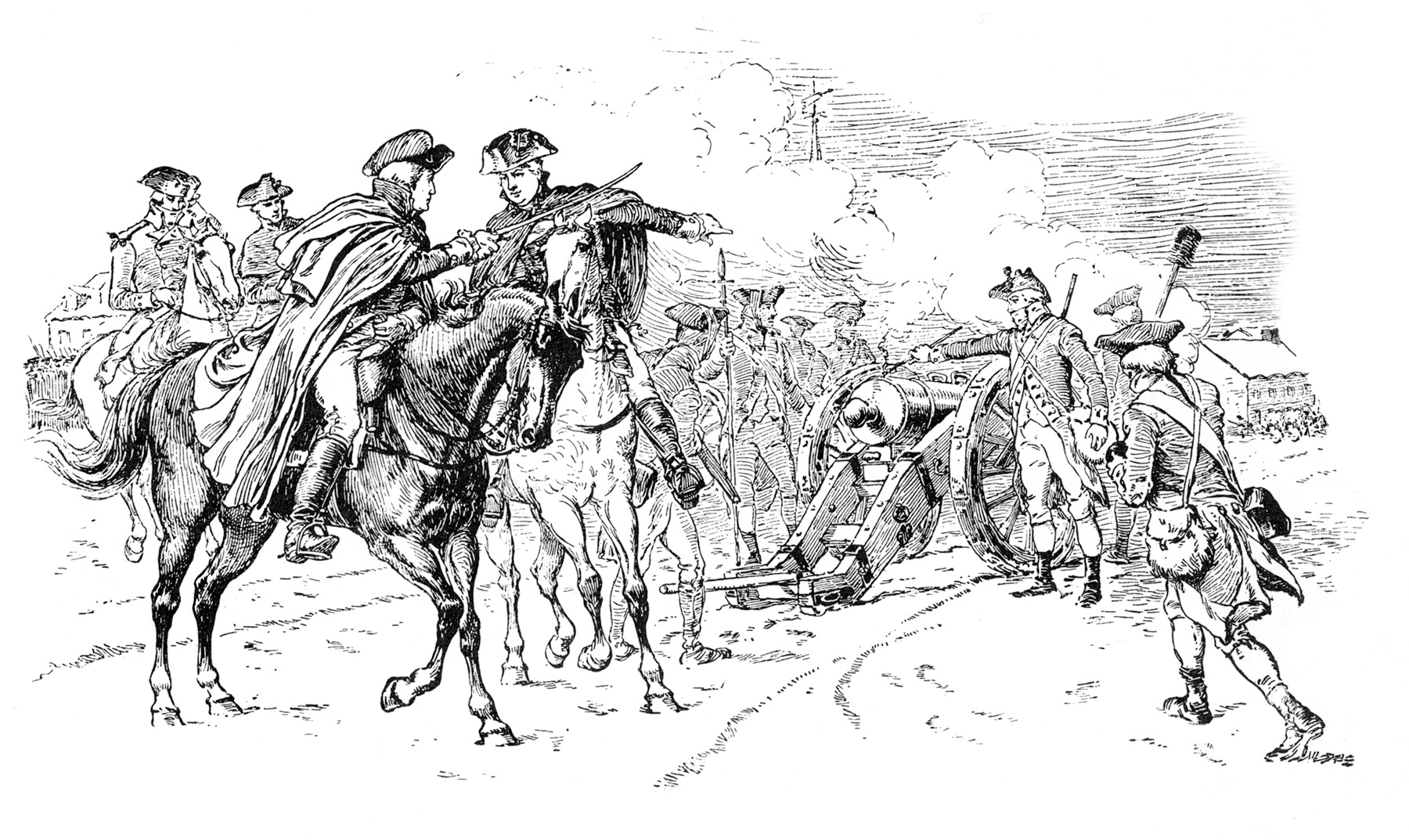
At the end of the French and Indian War in 1763, Honeyman was given an Honorary Discharge from the British army and moved to America. He took up residence in Philadelphia where he worked as a weaver. Around 1764, he married Mary Henry, an Irish girl from Coleraine, whom he may have known previously. Here he remained until early in 1776, when he moved with his family to Griggstown, Somerset County, NJ. It was after he arrived at Griggstown that Honeyman began to speak in favor of the king and became a vehement Tory. This was also when he began practicing the trade of a cattle herder and butcher, eventually performing these services for the British army.
There is some contention as to when Honeyman first met Washington and offered his services as a spy for the Patriot cause. One theory is that Honeyman, on the advice of the dying General Wolfe, sought out Washington in Philadelphia in 1776. After the two men worked out the details of Honeyman’s “cover” as a Tory, he subsequently moved to Griggstown, New Jersey, where he was unknown and his story would be more readily believed. Here he waited until Washington sent him a signal-the notice to be on the lookout for the “notorious Tory spy, John Honeyman”-which meant that his services were needed. Another theory is that Honeyman met with Washington in November 1776 at Fort Lee as the American army was being pushed out of New Jersey into Pennsylvania and it was here that they devised their plans. There is some evidence to indicate that this latter meeting did indeed take place, although it does not explain why Honeyman, known to support the Patriot cause while living in Philadelphia, would suddenly move to Griggstown and start “talking Tory.” It is plausible that they met twice, both in Philadelphia and again later at Fort Lee.
Whenever the two met, Washington would certainly have realized that Honeyman’s letter from Wolfe appointing him to the colonel’s bodyguard and his discharge from the British army would provide ample evidence of his honorable service to Great Britain should his loyalty ever come into question. His posing as a cattle drover and butcher, a trade he was skilled at, would allow him to travel the countryside without suspicion, gathering relevant information from the very people who employed him. As a former soldier, Honeyman would have the “soldier’s eye” necessary to observe and record useful military information. It would also appear obvious that the two men worked out the ruse of Honeyman’s capture as a means of getting him into the American camp without arousing suspicion, hence the reason Washington’s orders were specific on Honeyman’s being taken alive. Once there, it was an easy matter for Washington to interrogate Honeyman personally and alone, as standing general orders for the American army stated that all suspected spies were to be brought directly to the commander-in-chief. After Honeyman had relayed his information Washington would then order him imprisoned and closely guarded with the announcement that he would be tried for treason. Washington could then arrange a distraction to remove Honeyman’s guards and help the prisoner “escape.” Once free, Honeyman would make his way back to the British and relay his near-death experience, complete with information concerning the state of the American forces, thereby convincing both sides that he was indeed what he claimed.
Knowing that a Tory spy’s “capture” and subsequent “escape” would be a very dangerous game to play, Washington and Honeyman must have agreed to use this ruse only once, and then for very high stakes. While aware of the risks he was taking with his own life, Honeyman would also have been aware of the danger in which he was placing his family. Therefore, he must have either requested the letter from Washington ordering their protection or accepted the general’s offer of such a safeguard. The added sentence of the protection not applying to Honeyman himself would help to convince others that it was Honeyman alone who was the traitor and spy, not his family. As events proved, Washington’s letter did indeed save Honeyman’s family from harm.
Whether by design or the fortunes of chance, Honeyman spent roughly two weeks employed as a butcher for the Hessian garrison in Trenton. His credentials as a Tory being unquestioned, Honeyman was able to move at will throughout the village, observing the garrison’s daily routine and gathering information on its strengths and weaknesses. He learned where the Hessian guard posts were, the number of men in each, and when the guards were changed. He discovered that two of the six Hessian guns were always kept at Colonel Rall’s headquarters as a show of strength for the villagers and that the other four were not positioned in embrasures protecting the roads leading into the village, but kept together in one place. He learned of Rall’s love of music and that every morning he paraded a detail of men, the two guns, and the band up and down one of the main streets in the village. Finally, he learned of Rall’s contempt for American soldiers and as such did not feel it necessary to build redoubts or defensive works of any kind to protect the garrison. He also learned of the great celebration planned for Christmas evening, that there would be plenty of food and drink, and that the revelries would probably go on well into the early morning. All he had to do was find a way to get this information to Washington.
On December 20, Washington issued his order to the scouts to be on the lookout for Honeyman. On the 22nd, Honeyman was captured and brought to face Washington. During this secret meeting Honeyman obviously relayed all he had learned to Washington. Honeyman escaped later that night and made it back to Trenton where he informed Rall of the pitiful condition of the American army and that the colonel had no reason to suspect an attack from such a pathetic rabble. Honeyman’s experience as a former soldier, his being well known and liked by the Hessians, combined with Rall’s disdain for American troops had the desired effect. Colonel Rall was completely convinced that his command had no reason to fear an attack. Two days later Washington called a council of war and revealed his plans to cross the Delaware on the evening of the 25th—Christmas night—and attack Trenton in the early morning hours of the 26th.
There can be no doubt that Honeyman’s intelligence-gathering ability played a vital role in the crucial victory at Trenton. Because of the courageous efforts of one man, the cause of American independence was pulled from the brink of failure and given new hope.
John Honeyman was never again used as a spy by Washington, but for the rest of the war kept up his ruse as a Tory, continuously endangering his life at the hands of the very people he was trying to help. On December 5, 1777, he was arrested and sent to jail in Trenton on charges of high treason. On the 22nd he was allowed to appear before the general session and, although he was thought guilty of the crime, was given surety and was released. He was arrested and imprisoned again in June 1778, this time on charges that he did “aid and comfort the Enemies within this State against the form of the allegiance to the State the Government and Dignity of the Same.” The court record states that, ‘The Def[endan]t appeared and the Inquisition being read, &c pleaded Not Guilty, &c and put himself upon his Country.…” Someone must have been watching over Honeyman, for there is no record of his being punished on the charges and he was again released.
Following his vindication after the war Honeyman continued to live and work in Griggs- town. In 1793, he moved to Bedminster Township in Somerset County, near present-day Lamington, and bought a large farm. He lived here for the next 30 years, working as a farmer and weaver. From the end of the war until his death on August 18, 1822, at the ripe old age of 93, Honeyman rarely spoke about and never recorded any details about his service as a spy for Washington or the Patriot cause. Nor is there any mention of Honeyman or of his service in any of Washington’s writings.
On May 26, 2002, a rededication ceremony of a new granite headstone took place in the churchyard cemetery in Lamington, NJ. The new stone—is a replacement for the worn and nearly illegible headstone that marks the final resting place of John Honeyman—General Washington’s spy.
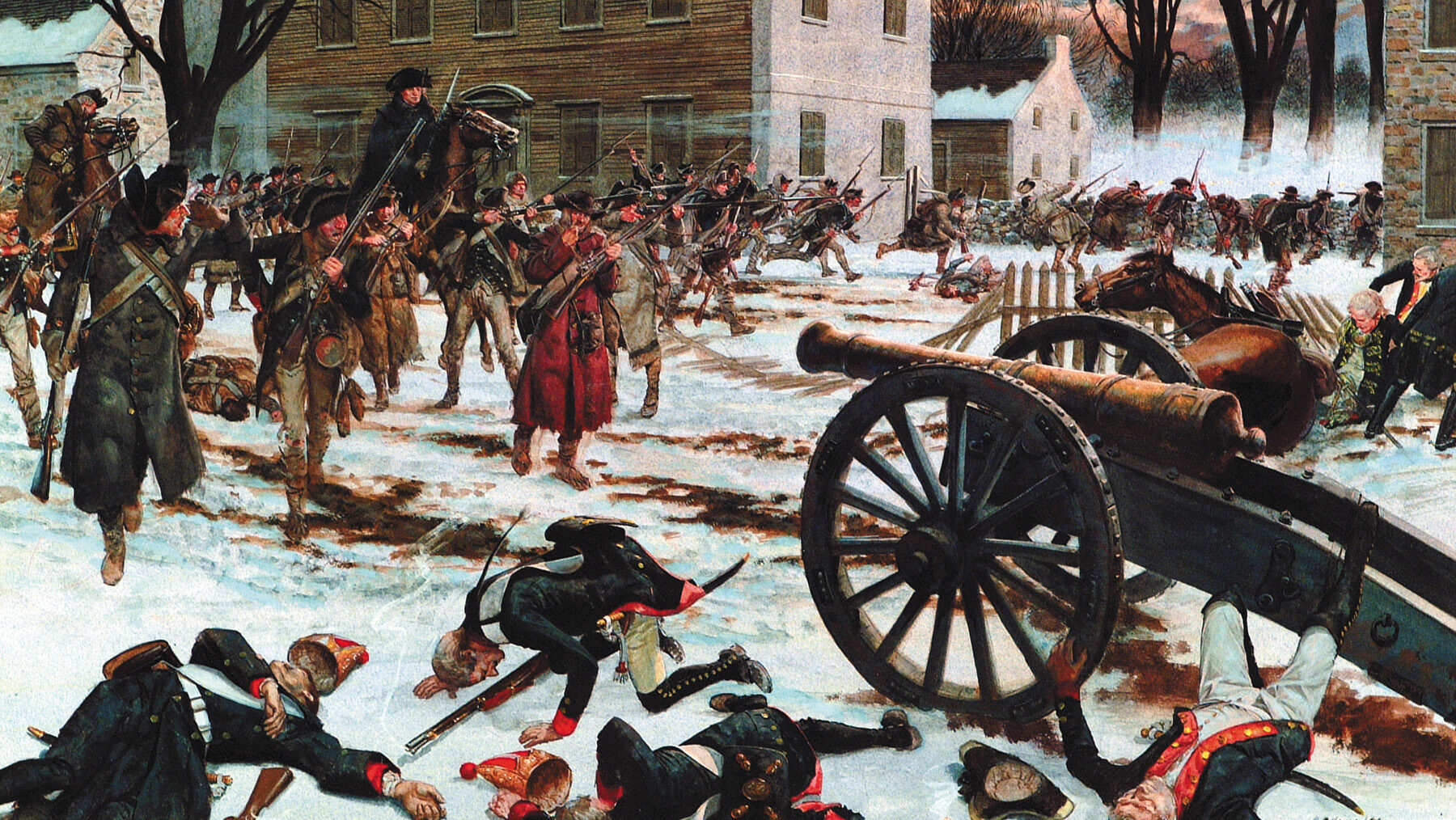
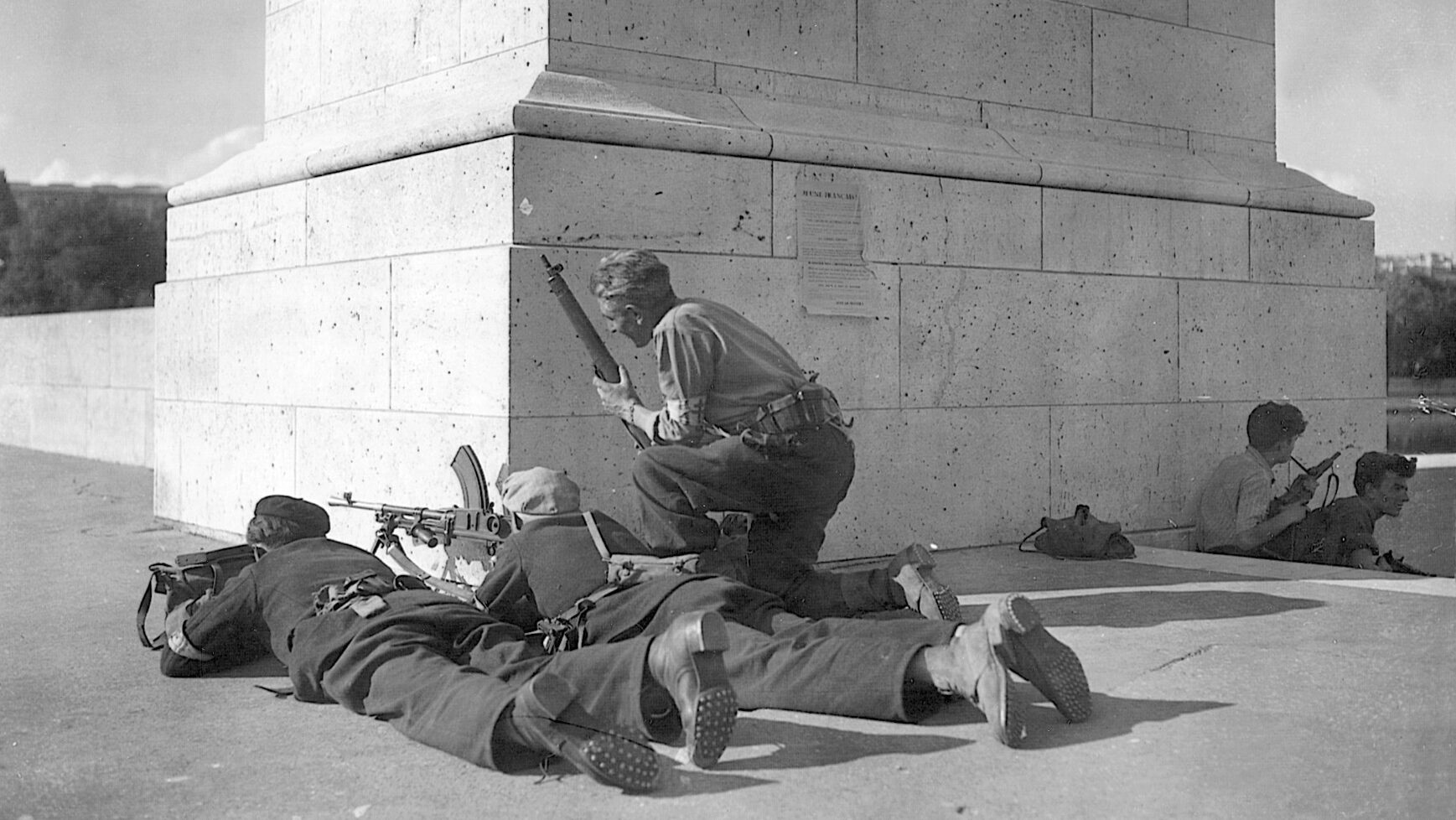
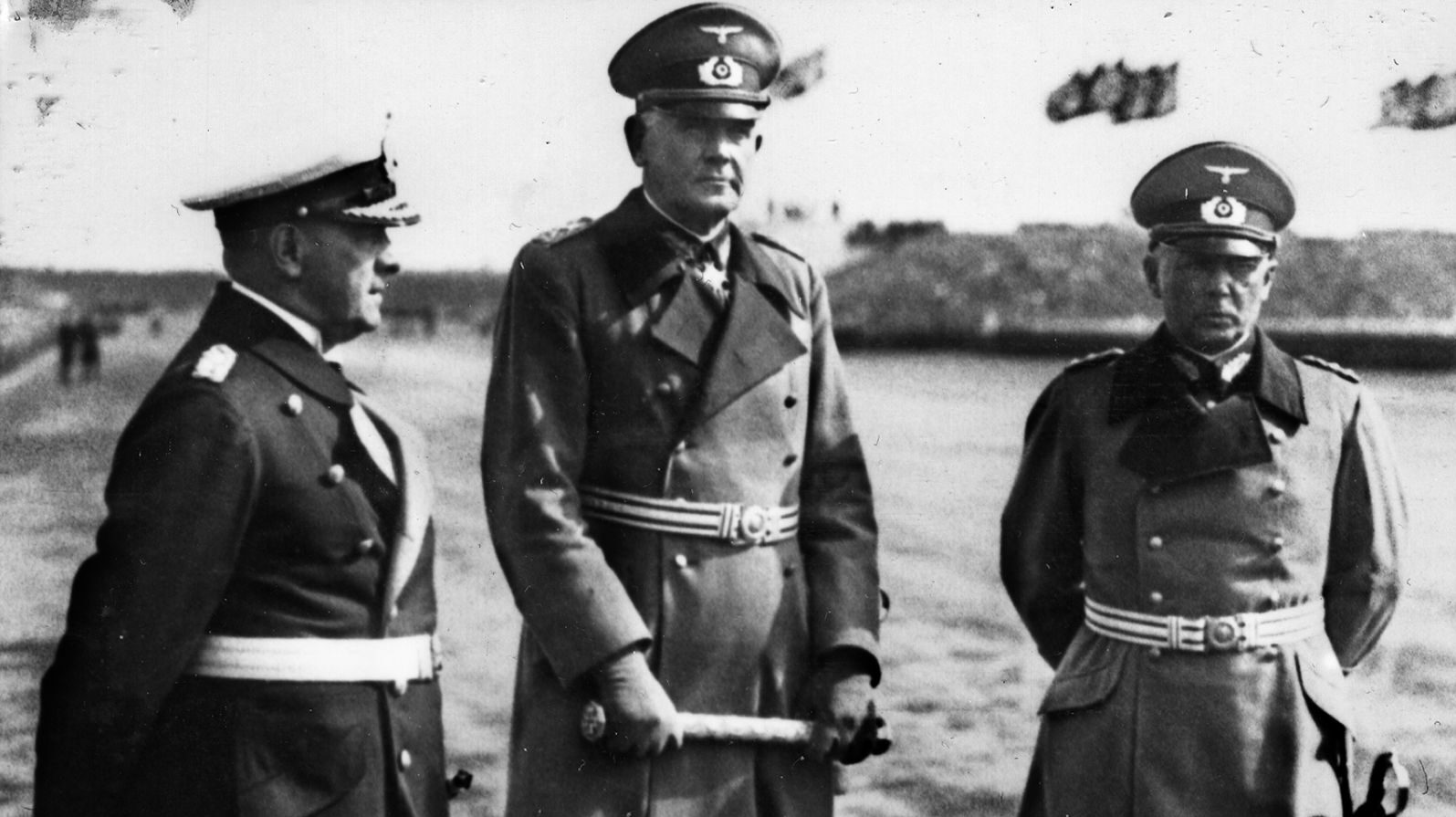
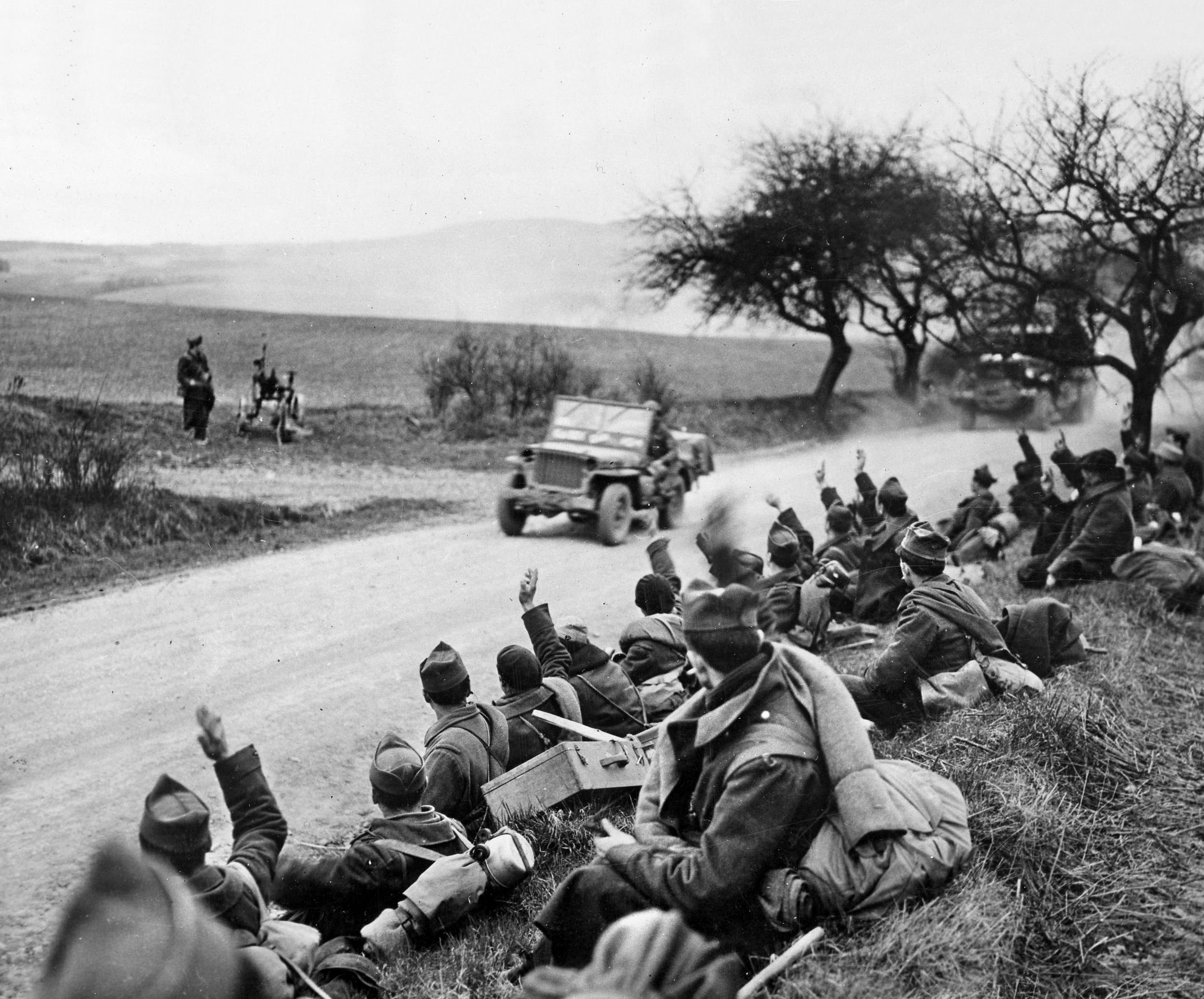
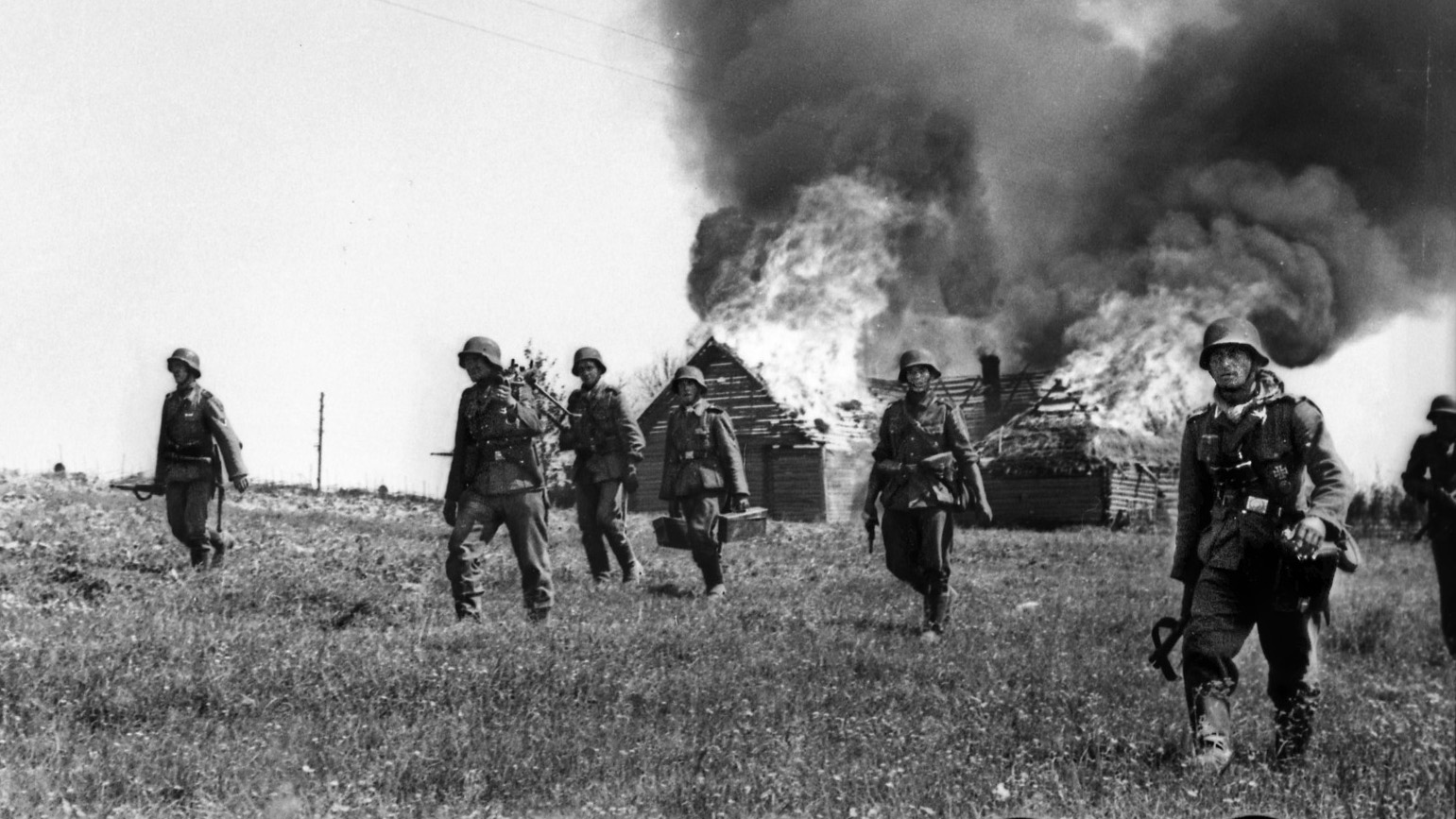

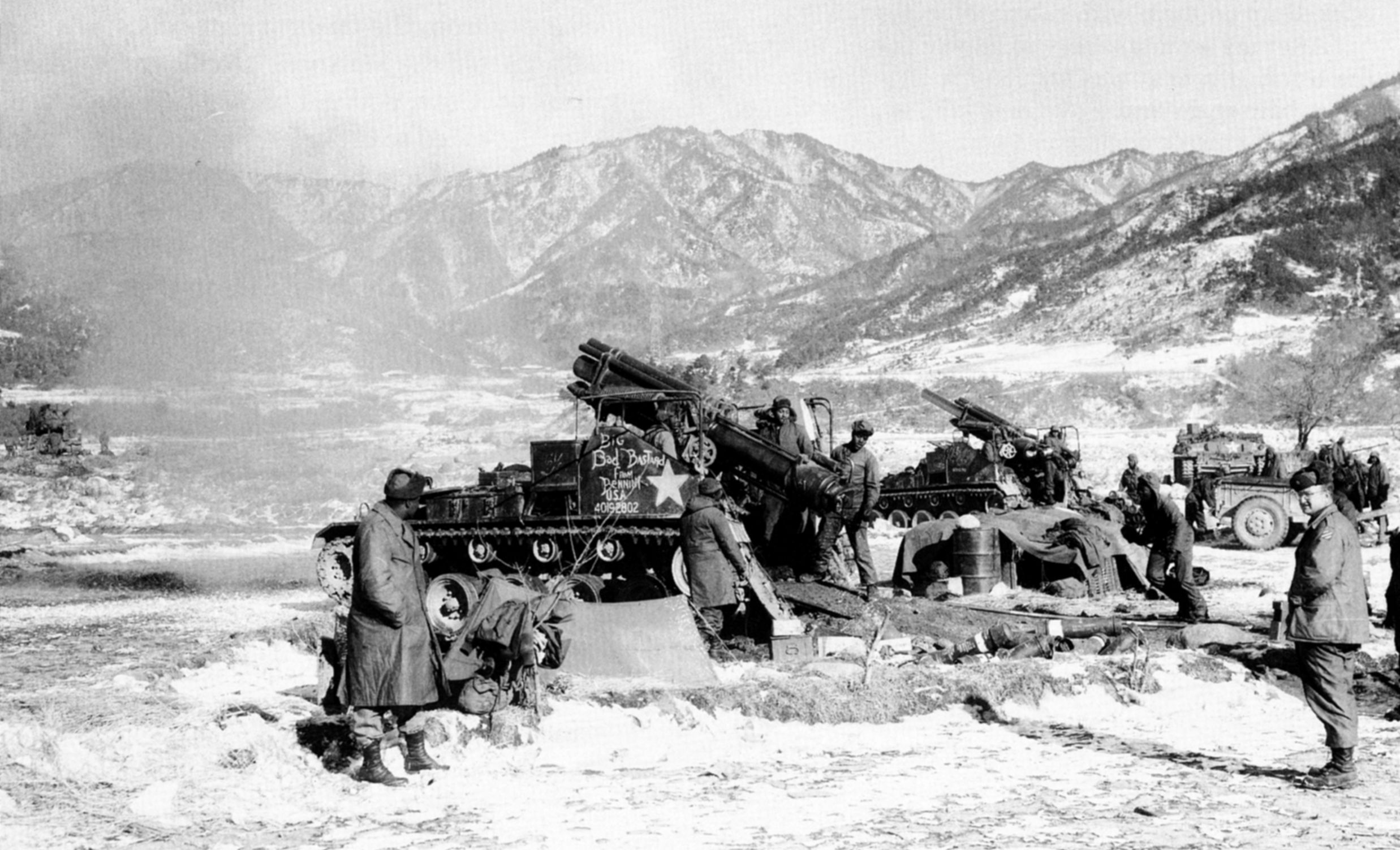

Join The Conversation
Comments
View All Comments